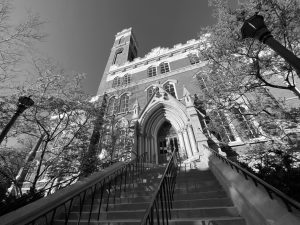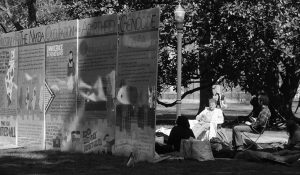Nashville leads the country with a 1.8% annual population growth, over double the national average. With the influx of citizens comes the influx of new business and housing developments, both of which increase city expansion and density. These increases have many consequences, some of which are positive for the city, such as economic growth and increased employment, while others aren’t as beneficial, such as traffic congestion and pollution. As cities become larger, it’s important to make sure that their economic growth doesn’t damage the environment. Doing so undercuts city sustainability, limiting the city’s prosperity for the future. Therefore, when cities grow at a rate like Nashville’s, they must find ways to promote economic growth as well as environmental sustainability. As such, I propose that Nashville looks into adding specialized bike paths to promote greener forms of transportation and, consequently, city sustainability.
All too often cities are designed for the car. Doing so hurts the environment drastically by proliferating the amount of greenhouse gases released into the atmosphere. It’s my hope that Nashville puts an end to this trend by implementing environmentally friendly infrastructure while it continues to develop. Therefore, Nashville and other growing metropolises should place an emphasis on both walking and biking. Walking and biking cause no stress or harm to the environment, require much less energy, emit zero greenhouse gas emissions and even make for a healthier, fitter population. These benefits make for a sustainable and much more livable city. It would be a no-brainer to invest in this sustainable infrastructure.
The best way to implement infrastructure that promotes walking and biking is to add specialized bike paths. Specialized bike paths separate the biker from both the road and pedestrians using physical barriers. Typically, the roads get narrowed to decrease the appeal of driving and to accommodate the additional bike lane. Next to the road is a parking lane for automobiles and bikes. On the other side of the parking lane is a wide bike path and, lastly, next to that a wide pedestrian walkway. This layout enhances safety by creating a buffer between the roadway traveled by automobiles and the pathways used by pedestrians and cyclists.
Additional safety features are designed to enhance and encourage bike travel. For instance, bike paths are often elevated and painted a different color so that cyclists are more visible and more protected. The increased pedestrian travel forces drivers to become even more cautious and drive slower, reducing accidents and further increasing safety. Further, as navigating the narrow streets via automobiles becomes a more congested and frustrating option, drivers are all but forced to find other more efficient modes of transportation. Therefore, this design promotes sustainability by decreasing the use of polluting automobiles and making the use of greener transportation more appealing.
Specialized bike paths have already been proven effective in other areas. One of the most famous areas is Copenhagen, which has earned a spot as one of the most bicycle friendly cities in the world. By following the aforementioned design, Copenhagen’s bicycle culture is thriving and is an appealing option to all residents, including older citizens as well as women and children. In fact, 42% of all commuters bike in Copenhagen. Their success has influenced other areas to follow, including my hometown of St. Paul, Minnesota. There is no reason why Nashville should have trouble implementing this design.
Adding specialized bike paths would be beneficial on campus as well. Rather than traffic congestion being the main issue here, pedestrian traffic can be problematic on campus. I don’t know how many times I’ve almost been run over by a bike this year, but I can assure you it’s a lot. It’s not their fault, either. The paths are small and there are thousands of students and faculty members rushing to get to their classes just like I am. By putting in specialized bike paths, the congestion issues we face day-to-day would cease to exist. No longer would one need to hesitate before taking the turn by Stevenson Center and the bridge in fear of being mauled by a bike. Bikers would have their own designated path that would allow them to avoid pedestrians completely. Plus, everyone’s commute would decrease as efficiency of both forms of travel increases. It’s a win-win situation for both pedestrians and bikers and proves that these bike paths would be beneficial for the entirety of Nashville.
Each day, the city of Nashville gains more and more citizens. While it’s fantastic that new families and businesses are joining this wonderful community, it’s important that the city doesn’t lose its environmental integrity. Therefore, Nashville should look to install the series of specialized bike paths. Not only will it reduce congestion, diminish greenhouse gas emissions and make for a fitter population, but it will also help preserve and protect our world.











